Participants will develop a deep understanding of how five research-based strategies (ask yourself questions, sentence frames and starters, annotation, the Four R’s, and turn-and-talks) can be used to help students with learning disabilities develop mathematical thinking. They will learn about six accessibility areas (conceptual processing, visual-spatial processing, language, attention, organization, and memory) math learners must use when doing mathematics. They will see how the essential strategies support students as they work in each of the accessibility areas by engaging in an instructional routine designed to develop mathematical thinking. Participants coalesce their learnings as they apply the course ideas to draft IEP goals that focus on students’ mathematical thinking.
Asynchronous from
Oct 6 - Nov 30, 2021
2 recorded synchronous sessions, Oct 27th and Nov 9th 7-8 pm Eastern
More Information


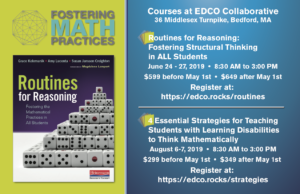
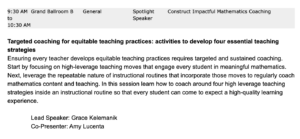
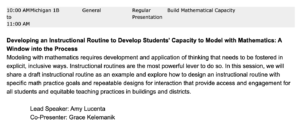
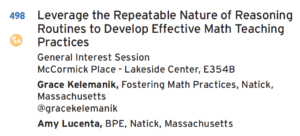
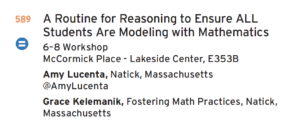
Comments are closed.
I did this task with eighth graders as we were in our linear relationship unit. It allowed students to discuss and share the strategies we have been working on in other problems. Students have been enthusiastic about sharing with the “talker/pointer” routine. When several teachers were doing a “learning lab” in my classroom, students asked if they could share using the “talker/pointer”.